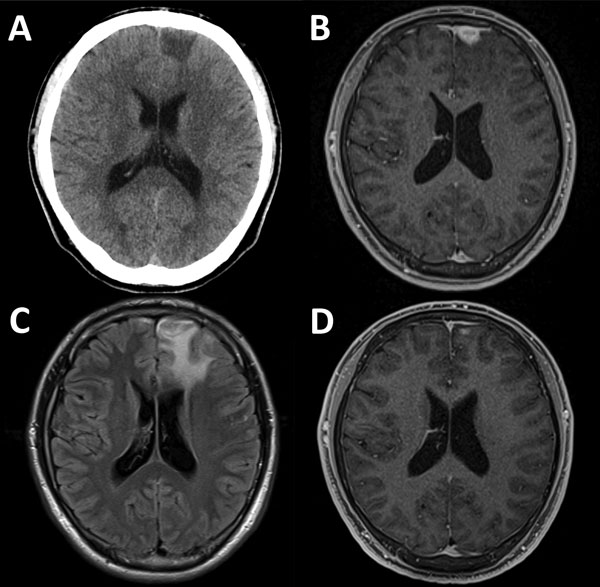Volume 22, Number 10—October 2016
Letter
Cerebral Syphilitic Gumma within 5 Months of Syphilis in HIV-Infected Patient
Figure

Figure. Diagnostic imaging results for a brain mass in a 21-year-old HIV-positive man with cerebral syphilitic gumma in Tokyo, Japan, for whom serum samples obtained as recently as 5 months earlier showed negative results for syphilis. A) Noncontrast, cranial computed tomography showing a hypodense lesion in the left frontal lobe. B) Gadolinium-enhanced, axial, T1-weighted magnetic resonance imaging (MRI) showing an enhanced lesion (mass) (14 × 14 × 12 mm) adjacent to the enhanced dura in the left frontal lobe. C) Axial, fluid-attenuated inversion recovery MRI showing extensive left frontal edema. D) Two months after treatment for syphilis, gadolinium-enhanced, axial T1-weighted MRI showing substantial resolution of the lesion.
Page created: February 08, 2018
Page updated: February 08, 2018
Page reviewed: February 08, 2018
The conclusions, findings, and opinions expressed by authors contributing to this journal do not necessarily reflect the official position of the U.S. Department of Health and Human Services, the Public Health Service, the Centers for Disease Control and Prevention, or the authors' affiliated institutions. Use of trade names is for identification only and does not imply endorsement by any of the groups named above.